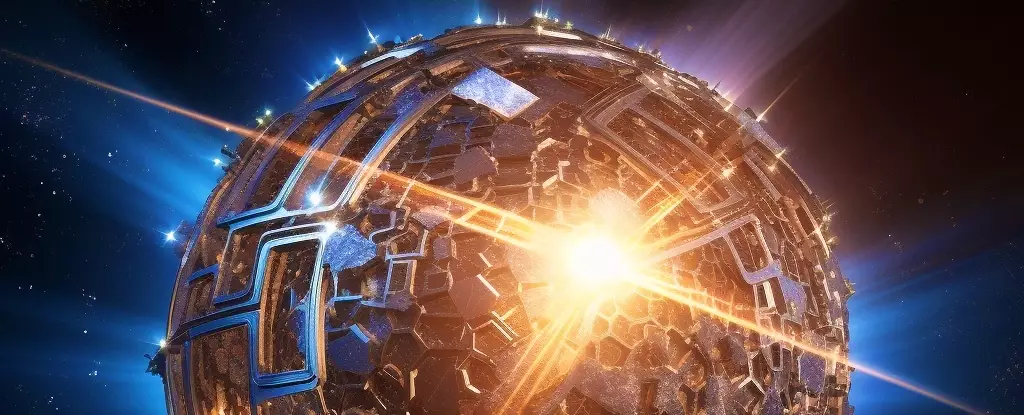The search for extraterrestrial intelligence (SETI) has captivated scientists and enthusiasts alike for decades. One intriguing concept that has emerged from scientific speculation is the idea of Dyson Spheres – massive structures that harness the energy of a star. Traditional SETI approaches have focused on detecting Dyson Spheres based on their waste heat signatures. However, a recent paper by astronomy and astrophysics Professor Jason T. Wright suggests a new approach. In this article, we will explore Professor Wright’s study and its implications for the search for Dyson Spheres.
Looking beyond Waste Heat Signatures
Traditionally, the search for Dyson Spheres has revolved around detecting their waste heat emissions in the mid-infrared range. However, this approach has yielded no concrete results so far. Professor Wright argues that it is time to refine the search by looking for indications of activity rather than solely relying on heat signatures. This shift in focus is based on the concept of the Landsberg Limit, which represents the theoretical efficiency limit for harvesting solar radiation. By examining how an advanced civilization utilizes energy, we may gain insights into the presence of Dyson Spheres.
Theoretical Models and Engineering Challenges
One major hurdle in detecting Dyson Spheres is the lack of a comprehensive theory regarding their properties. The thermal signatures of these megastructures remain largely unknown, leading to assumptions and simplifications in theoretical models. Nonetheless, astronomers have put forth various proposals for the thermal signatures of Dyson Spheres. A key consideration is the purpose of the Dyson structure, as it provides clues about its material properties. Beyond energy capture, researchers have suggested potential uses such as stellar engines or massive supercomputers.
Furthermore, Professor Wright emphasizes the engineering practicalities involved in building Dyson Spheres. While the laws of physics form the basis for their existence, the optimization of mass and gradual construction of the spheres must also be considered. His analysis suggests that smaller, hotter Dyson Spheres may be more advantageous in terms of mass utilization and work extraction of starlight. These findings challenge previous assumptions and open up new possibilities for detection.
Despite the limitations in our current ability to detect Dyson Spheres, there have been notable advancements in recent years. The work of astrophysics Ph.D. student Mathias Suazo and his colleagues at Project Hephaistos is particularly noteworthy. By combining data from various observatories, such as the ESA’s Gaia Observatory and NASA’s WISE, they narrowed down a list of potential candidates based on thermal signatures. This data-driven approach offers a promising avenue for future observations and has identified several viable candidates for follow-up investigations using next-generation telescopes.
Although the search for Dyson Spheres has yet to yield definitive evidence, the possibility remains tantalizing. As Freeman Dyson, the physicist who first proposed the concept, famously remarked, “there is nothing so big nor so crazy that one out of a million technological societies may not feel itself driven to do, provided it is physically possible.” The exploration of Dyson Spheres represents our curiosity and desire to connect with other intelligent civilizations beyond our own. With continued advancements in technology and innovative approaches like Professor Wright’s study, we may one day unravel the mysteries of the universe and discover the presence of these awe-inspiring megastructures.
The search for Dyson Spheres is a captivating and ongoing pursuit in the field of SETI. Professor Wright’s study offers a fresh perspective on how we can refine our search parameters by looking for indications of activity rather than solely relying on waste heat signatures. By considering the purpose, engineering challenges, and theoretical models of Dyson Spheres, researchers are expanding our understanding and detection capabilities. Advancements in data-driven approaches and next-generation telescopes provide hope for future breakthroughs in uncovering these magnificent structures. As we push the boundaries of scientific exploration, we inch closer to the possibility of discovering intelligent civilizations residing within Dyson Spheres.


Leave a Reply